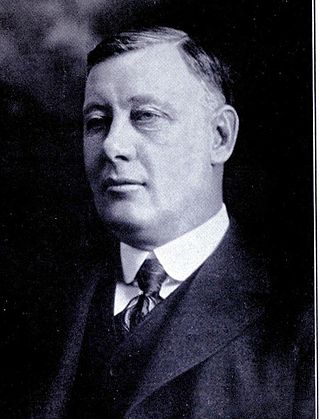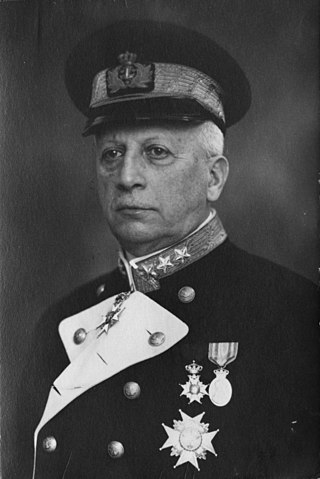
George Perry Graham, was a journalist, editor and politician in Ontario, Canada.

Sir John Douglas Hazen, was a politician in New Brunswick, Canada.

The minister of national defence is a minister of the Crown in the Cabinet of Canada responsible for the management and direction of all matters relating to the national defence of Canada.

The Militia Act of 1855 was an Act passed by the Parliament of the Province of Canada that permitted the formation of an "Active Militia", which was later subdivided into the Permanent Active Militia and the Non-Permanent Active Militia, and divided the province into 18 military districts.
The Minister of Militia and Defence was the federal government minister in charge of the volunteer army units in Canada, the Canadian Militia.

Charles Colquhoun Ballantyne, was a Canadian politician.
Minister of National Defence for Naval Services (Canada) was the minister responsible for the Royal Canadian Navy during World War II. The post was merged into the current post of the Minister of National Defence (Canada). Prior to World War II, another ministerial post, Minister of the Naval Service existed from the creation of the Royal Canadian Navy in 1910 up to 1922 and preceded the Minister of National Defence.
Minister of National Defence for Air (Canada) was the minister responsible for the Royal Canadian Air Force during World War II. post created by the 1940 War Measures Act. The act specifically amended the National Defence Act of 1923.
Department of Naval Services (Canada) was the department responsible for the naval services in Canada during the transition from the Royal Navy to the Royal Canadian Navy from 1910 to 1923.

The Air Board was Canada's first governing body for aviation, operating from 1919 to 1923. The Canadian government established the Air Board by act of Parliament on June 6, 1919, with the purpose of controlling all flying within Canada. Canada was the first country to legislate and implement rules governing the entire domain of aviation.
The Department of Militia and Defence was the department responsible for military land forces in Canada from 1906 to 1921.

James Alexander Calder was a Canadian politician.

Edward Mortimer Macdonald, was a Canadian politician.

The Twelfth Canadian Ministry was the first cabinet chaired by Prime Minister William Lyon Mackenzie King. It governed Canada from 29 December 1921 to 28 June 1926, including the 14th Canadian Parliament and most of the 15th. The government was formed by the Liberal Party of Canada. Mackenzie King was also Prime Minister in the Fourteenth and Sixteenth Canadian Ministries.

The Tenth Canadian Ministry was the second cabinet chaired by Prime Minister Sir Robert Borden. It governed Canada from 12 October 1917 to 10 July 1920, including most of the 13th Canadian Parliament. The government was formed by the Unionists, a war-time coalition between the old Conservative Party of Canada and some members of the Liberal Party of Canada. Borden was also Prime Minister in the Ninth Canadian Ministry, but formed a coalition ministry for the 1917 Canadian federal election.

The Ninth Canadian Ministry was the first cabinet chaired by Prime Minister Sir Robert Borden. It governed Canada from 10 October 1911 to 12 October 1917, including only the 12th Canadian Parliament. The government was formed by the old Conservative Party of Canada. The Conservatives governed in coalition with the Liberal-Conservative Party until 12 October 1916 when the last Liberal-Conservative cabinet minister, Sam Hughes, was dismissed. Borden was also Prime Minister in the Tenth Canadian Ministry, which he formed for the coalition government with the Liberal–Unionists in the lead up to the 1917 Canadian federal election.
The Minister of Aviation (Canada) was the minister in charge of the military air service in Canada prior to the creation of the RCAF. There was no official minister in charge of this department as Canada did not have a formal air force.

Sofoklis Dousmanis was a Greek naval officer. Distinguished in the Balkan Wars, he became twice the chief of the Greek Navy General Staff, and occupied the post of Minister for Naval Affairs in 1935.

The Allied leaders of World War I were the political and military figures that fought for or supported the Allied Powers during World War I.

Admiral Otto Emil Lybeck was a Swedish Navy officer. Lybeck's senior commands include Minister of Defence, Commander-in-Chief of the Coastal Fleet and Chief of the Naval Staff.
This page is based on this
Wikipedia article Text is available under the
CC BY-SA 4.0 license; additional terms may apply.
Images, videos and audio are available under their respective licenses.












